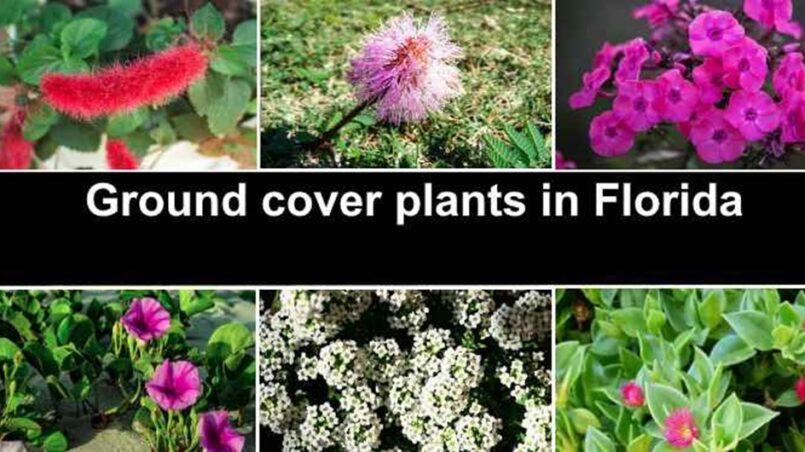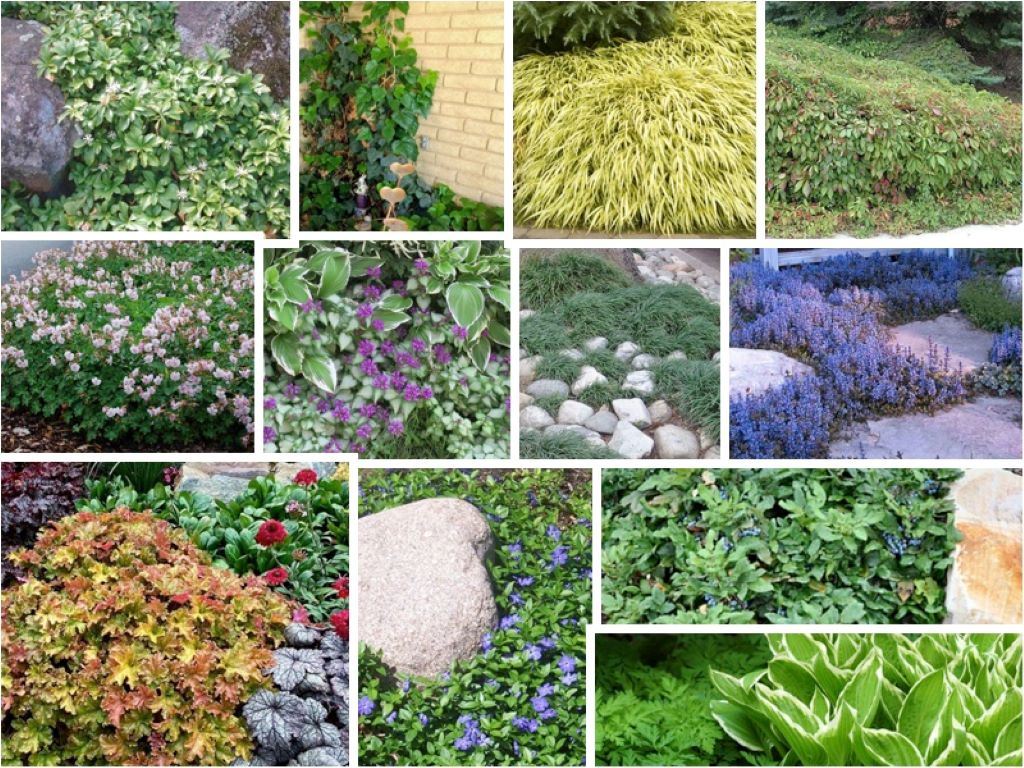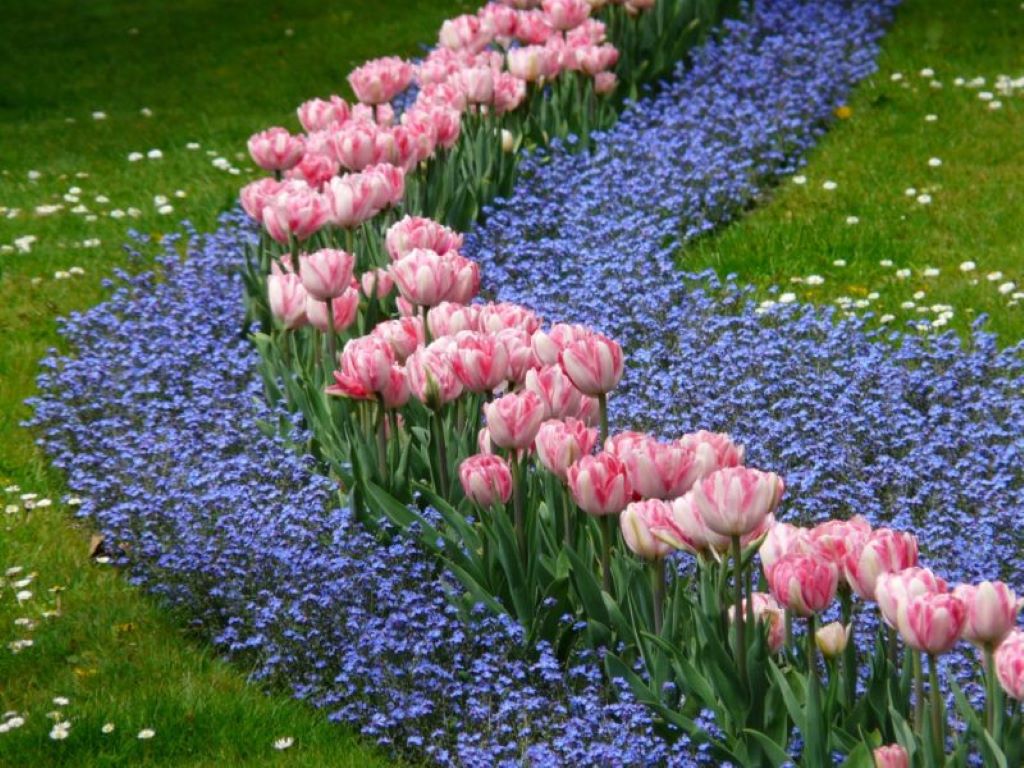When it comes to landscaping in Florida, selecting the right ground cover plants is crucial. The Sunshine State’s unique climate, characterized by high temperatures, abundant sunshine, and occasional heavy rainfall, demands resilient and adaptable plants. In this guide, we’ll explore an array of florida ground cover plants options that not only thrive in Florida’s conditions but also add aesthetic appeal to your outdoor space.
What is the Ground Cover With Purple Flowers in Florida?
Identifying the exact ground cover with purple flowers in Florida is tricky without specifics about its characteristics, preferred sun exposure, and bloom timeframe. However, here are some strong contenders you might be thinking of:
Full Sun:
- Frogfruit: Native, year-round bloomer with tiny purple flowers, tolerates drought and occasional flood.
- Purple queen: Trailing ground cover with vibrant purple foliage and occasional purple flowers, loves sun and spreads quickly.
- Carolina Wild Petunia: Native ground cover with light purple bell-like flowers blooming year-round.
Part Sun/Shade:
- Creeping phlox: Fragrant ground cover with vibrant purple florets in spring and summer.
- Bugleweed: Low-growing ground cover with violet-blue flower spikes in spring and summer.
- Periwinkle: Evergreen ground cover with purple, blue, or white flowers in spring and sporadically throughout the year.
Shade:
- Mondo grass: Grass-like ground cover with lavender-purple blooms in shade or partial sun.
- Persian shield: Large perennial with stunning iridescent purple leaves and delicate purple flowers in shade.
Remember, this is not an exhaustive list, and the best choice for you depends on your specific needs and preferences. Consider consulting a local nursery or extension agent for tailored recommendations based on your location and desired characteristics.
Understanding Florida’s Climate
Before delving into the specific ground cover plants, let’s briefly understand the climate of Florida. With its subtropical and tropical zones, the state experiences hot and humid weather, especially during the summer months. These conditions can pose challenges for plants, making it essential to choose varieties that can withstand the heat, resist pests, and adapt to varying soil types.
1. Asiatic Jasmine (Trachelospermum asiaticum)
Description: Asiatic Jasmine, also known as Dwarf Jasmine or Confederate Jasmine, is a popular ground cover in Florida. Its dense, low-growing foliage creates a lush carpet effect, making it ideal for both residential and commercial landscapes. This evergreen plant is not only hardy but also drought-tolerant once established.
Planting Tips: Plant Asiatic Jasmine in well-draining soil and provide occasional irrigation until it establishes itself. It thrives in partial shade but can adapt to full sun conditions.
2. Beach Sunflower (Helianthus debilis)
Description: For a touch of vibrant color, consider the Beach Sunflower. With its cheerful yellow blooms and green foliage, this ground cover adds a coastal flair to your landscape. It’s well-suited for sandy soils and is salt-tolerant, making it an excellent choice for those living near the coast.
Planting Tips: Plant Beach Sunflower in a sunny location with well-draining soil. Once established, it requires minimal watering and is resistant to pests.
3. Muhly Grass (Muhlenbergia capillaris)
Description: If you’re aiming for a more natural, native look, Muhly Grass is an attractive option. Known for its feathery pink or purple plumes, this grass adds a touch of elegance to any garden. It’s drought-tolerant and thrives in Florida’s sandy soils.
Planting Tips: Plant Muhly Grass in full sun for the best display of its vibrant plumes. It’s a low-maintenance plant that only requires occasional trimming to maintain its shape.
4. Coral Creeper (Barleria repens)
Description: For a ground cover with unique flowers, consider the Coral Creeper. This evergreen shrub produces tubular orange or red flowers and has attractive dark green foliage. It’s a hardy plant that can withstand heat and is moderately drought-tolerant.
Planting Tips: Plant Coral Creeper in well-draining soil and provide regular watering until it establishes itself. It’s suitable for both sunny and partially shaded areas.
5. Coontie (Zamia integrifolia)
Description: If you’re looking for a native Florida ground cover that’s also a bit unconventional, consider Coontie. This slow-growing cycad has attractive fern-like foliage and is well-adapted to Florida’s sandy soils. It’s a hardy plant that adds a touch of prehistoric charm to your landscape.
Planting Tips: Plant Coontie in well-draining soil and provide occasional watering until it establishes itself. It’s suitable for both sun and shade.
Frequently Asked Questions (FAQs)
Q1: Can I use ground cover plants in place of traditional lawns in Florida?
A1: Yes, many ground cover plants are suitable alternatives to traditional lawns in Florida. They offer various benefits, including water conservation and reduced maintenance requirements.
Q2: Are there ground cover plants that attract butterflies and pollinators?
A2: Absolutely! Plants like Beach Sunflower and Muhly Grass are known to attract butterflies and other pollinators with their vibrant blooms.
Q3: How often should I water ground cover plants in Florida?
A3: The watering frequency depends on the specific plants and soil conditions. In general, it’s essential to provide regular watering until the plants establish themselves, after which many ground covers become drought-tolerant.
Q4: Can ground cover plants help prevent soil erosion in my garden?
A4: Yes, ground cover plants play a crucial role in preventing soil erosion. Their dense foliage helps stabilize the soil and reduce the impact of heavy rainfall.
Q5: What is the best time to plant ground cover in Florida?
A5: Fall and early spring are generally the best times to plant ground cover in Florida. The milder temperatures and higher humidity during these seasons promote successful establishment.
Conclusion
Choosing the right florida ground cover plants involves considering not only aesthetic preferences but also the specific requirements of the plants and the local climate. Curious about where to find information on gardening tips? From the vibrant blooms of Beach Sunflower to the timeless appeal of Coontie, explore a diverse array of options to suit your landscaping goals in the Sunshine State, and discover valuable insights to enhance your outdoor space with resilient and beautiful ground cover plants.
















